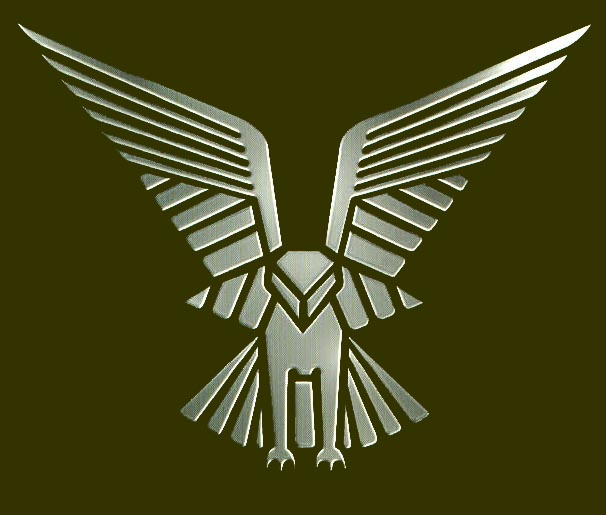|
BUSH TRACKING AND COUNTERTRACKING
Trooper Reed, at point position on
the patrol, was kneeling by the side of a cross-track in the thick woodland when
the stick leader caught up with him He barred the way with a stick to stop the
young trooper stumbling all over the ‘spoor’ (track), then pointed with the
stick. “Four of them. Early yesterday, by the look of it; there are animal
tracks coming and going over the top. Three wearing plain-soled boots and the
other with car-tire sandals on. I’ve seen his tracks before. He was part of
that band that got away from Fire force two weeks ago.”
“Well, what are we waiting around for?” asked the
trooper, and started off up the track.
Reed began to laugh.
“What the hell’s so funny?”
“You’re going the wrong way. The
bastards had
their boots tied on backwards.”
The
Selous Scouts use airborne surveillance and intelligence to gather information
about the movement of terrorist bands, but they often have to fall back on the
oldest of hunting skills - Tracking
You don’t have to be born to
it to be a good tracker. This section, based on the Rhodesian Anti-Terrorist
Operations, sets out how to find tracks, read them, and follow them in an effort
to come to grips with insurgents.
Common
sense and careful observation
The operations usually
starts with two trackers going off to left and right along a base line, and then
making a
wide circle around the
area. When they find the track, their first action is to keep everyone else well
away from it — too much information can be lost by friendly forces trampling
all over vital signs.
The
trackers try to estimate the number of terrorists, the age of the spoor, and the direction they’ve
taken. These details are relayed back to central headquarters so that it can be
used with information from other sources, and so widen the overall intelligence
picture.
The
man who first found the track will lead the hunt that follows, and he won’t
give up that position until he loses the trail. Then the casting-about operation
will begin again until contact is reestablished, and a new lead tracker takes
over.
Trackers
work in pairs whenever they can — but in silence. This is a very vulnerable operation that could easily be
the subject of an ambush. Talking and smoking are not allowed, and noise must
always be kept to a minimum.
The signs that a tracker looks for —footprints and broken or disturbed vegetation are
the most important —tell
him the direction the quarry took, their numbers, how long ago they passed,
whether they were carrying loads or were empty-handed, how fast they were
moving, their ages (or at least their size), their sex, and perhaps even
something about their morale.
footprints
Footprints
are the most important tell-tale. You can’t always assume that the people
you’re following are walking in the direction that the toes point-
they could have their boots tied on backwards (even
when they’re barefoot, they may be walking backwards!). But you can tell
their direction of travel by checking which part of the indentation is the
deepest —
the deepest part
shows the direction of march. The depth of the indentations will tell you
whether they were carrying heavy loads or not, and so will the length of their
stride. Heavily laden men take short paces.
The difference between the depths at the front and
back will give you an idea of their speed — a running man, for example, leaves a deep toe print but little or
nothing at the heel.
How well you’ll be able to gauge
the age of tracks depends a lot on weather conditions and even the time of day.
Tracks in muddy ground that have no water standing in them are very fresh; soon
after they’re made, water will start to fall back into it.
If there has
been recent rain, and you can see splatter marks inside the track marks,
that’s a sure sign that they date from before the rain.
If it’s an animal track you’re on, look for
signs that animals have walked on top of the human trail you’re following.
Most animals move back and forth along these tracks, which usually lead from
their daytime lairs to water holes, at night. If there is a double set of
animal tracks, one in each direction, over the top of the human footprints, then
they are at least a night old.
Disturbed
vegetation
It’s very difficult to move
through the African bush without leaving signs. Bent and broken grass, twigs and
other vegetation can tell you not only which way the enemy went, but also how
long ago he passed. Bent and broken grass will stay green to start with, but
will turn brown after a day or so. Harder vegetation will take longer to change color.
Bear in mind that full sunlight will speed up the process, and shade will slow
it down. Rain will affect the time-scale too.
Beware
of ambush
If a track that
has been quite distinct suddenly becomes much more difficult to follow, without
any particular reason such as a change in the nature of the ground, the most
likely conclusion is that the enemy has become extra careful and is preparing to
go to ground, either in a lying-up place or perhaps in ambush.
If this happens, the strategy is to move in a
wide circle around the area, stay downwind, and look for signs —the usual trail signs, but also human scent, the
smoke from fires and cigarettes, and cooking smells. Listen hard, too, for the
sound of weapons being prepared and other signs of an enemy presence.
hard
going
Many factors
affect the efficiency of a
tracking
operation. The type of ground, the character of the country, he weather and the
direction of the sun (well-defined shadows help the tracker considerably), the
sort of shoes the quarry is wearing, how much other traffic there is in the
area, and the alertness of the trackers, can ill make the job more or less
difficult.
A smart enemy will use all the
features of the country he’s crossing to make the tracker’s job more
difficult. Hard or rocky ground, streams and water courses, irregular habits,
backtracking, changing shoes, even swinging from tree to tree . . . These can all throw you off the scent. Be
patient. If you lose the spoor, circle around and try to pick it up again. If
that doesn’t work, cast a wider circle. Look for things like broken spiders’
webs; any sign that someone has passed by recently.
Look
out for scavenging and food gathering
The enemy has to eat. If he’s not been prepared
for a long operation, he’ll have to try to live off the land, or else beg,
steal or buy food from people he encounters. Even if local inhabitants claim
that food has been stolen from them, they could be lying to protect the
terrorists. Don’t follow their directions without checking independently.
Surer signs are fruit trees and edible plants that have been raided, disturbed
bee hives, and traps and snares. Look out for discarded foodstuff — unripe fruit doesn’t fall from trees of its own
accord.
Insect clues
Look out for
other signs, too, like recent fire sites, and urine and excrement — which you can often spot by a gathering of flies,
yellow butterflies or dung beetles. The enemy may even be stupid enough to leave
food wrappers lying about.
Look for freshly
turned earth, and dig down to find out if anything has been buried. Remember to
preserve material intact for examination, but
don’t handle it with your bare fingers it may
have enemy prints on it.
The
advantage is yours
Remember, above all, that the enemy is bound to leave
some signs of his passage, no matter how small. Fresh scratches on rock and
stones or logs overturned, tiny sprays of sand or loose dry earth, any signs of
disturbance can give you valuable information. Covering his tracks will cost the
enemy precious time, and he knows this. If you can press him hard, he’s more
likely to make mistakes, but if you’re in hot pursuit you may miss them. Take
some time. Examine all the signs carefully.
If you have dogs to help you,
your job will be considerably easier. But that is the subject of a separate
section on anti-terrorist tactics.
(END)
***NOTE*** Source for this was obtained from The Handbook
of the S.A.S.-How Professionals Fight and Win, by Jon E. Lewis.
|




